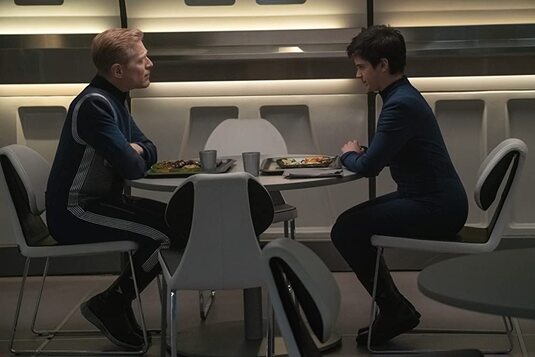Written by Shae Rufe  In doing my research for this next blog, I was really beyond let down. The lack of Transgender representation is so shockingly stark that it is discouraging. Most of my research proved that many Transgender characters in popular media were either one offs or mockeries. Perhaps the latter is my interpretation of the presentation of these characters, however the manner in which these characters were portrayed leads me to that mindset rather than seeing them as genuine. In some cases, my search led me to fan theories about certain characters being Transgender without any canonical backing. Like with Pidge in the Netflix revival of Voltron. Many fans wanted her to be Transgender or Non-Binary, but the truth is canonically she’s still Katie, who took on a different identity to find her brother. It’s never said in the show that Pidge is Transgender or Non-Binary. Of course, this is the same show that led us to believe we would get a possible romantic interest for Shiro, and in the very end we got one small cut scene with a past boyfriend and a three second still of a post-show wedding. Pidge could have been Transgender or Non-Binary, but the show never made it happen and the fans chose to pose their theories online. To me that just shows how desperate people are to have proper Transgender representation in media, because let’s face it, there truly isn’t enough. When there is a Transgender character, they’re often a side or one-off character, so far, not the main character. She-Ra and the Princesses of Power, another Netflix revival, features Jewelstar, a Transgender character voiced by a Transgender actor, however he is only featured in one single episode. That actually seems to be it for Transgender representation in modern day American Animation. Comics on the other hand have bigger wins. Batgirl, which ran from 2011-2016 gave us the first major Transgender character in a comic series in the form of Barbara Gordon’s roommate, Alysia Yeoh. Alysia comes out to Barbara as Transgender in the comics, and she’s also bisexual. It’s a wonderful moment for many fans and certainly a great one for comic readers. DC was the first major comic publisher to have a Transgender main character. Yet that seemed to be it when it came to further representation. There seems to be more representation in literature than any other form of media. While that isn’t a bad thing in the slightest, it is still disheartening that in 2021 Transgender representation in television and movies is floundering. For people to not see themselves within characters creates a disconnect. It’s important that we can look at characters and see our likeness within them. It helps people to connect and feel much less alone. Because if this hero or this character can go through hard situations and make it out okay, come out still a hero, then so can we. When it came to finding Non-Binary representation within media, I had a bit more luck but the list was still pretty small. Ironically, Steven Universe could technically be a show about a large number of Non-Binary characters. The Gems are technically neither male nor female, as their physical forms are self-chosen projections. However, all Gems use she/her pronouns. There was one exception, however, with Sadie’s partner, Shep. In the final season of Steven Universe, Future, we were introduced to Shep for a single episode, and they do use they/them pronouns. Which was really amazing to see, but again, was a short scene with a one-off side character. She-Ra and the Princesses of Power did offer more representation for Non-Binary characters with Double Trouble. While they aren’t a main character, they are around for 8 episodes, more than just a single, one-off passing. Star Trek: Discovery takes the cake with their Non-Binary character; Adira. They originally use she/her pronouns for the first few episodes, until they finally correct someone. The way Star Trek: Discovery handled this situation is how we should all handle changing someone’s pronouns. Adira asked to be referred to as they/them and everyone did. It’s literally that simple. Oddly enough there is further representation of Non-Binary in the book and show adaptation of Good Omens. The angels and demons are all Non-Binary, as stated by co-author Neil Gaiman. We see this with the Amazon live action adaptation in its showing of characters such as Beelzebub, Michael, and Pollution. Crowley is actually portrayed as more gender fluid and seems to slip between more masculine and feminine appearances more so than Aziraphale. It’s important as we continue on, to remember that all forms of representation are important. Although there have been major strides to have LGBTQA+ portrayals in media, we still have a long way to go in order to break out of the heteronormative narrative that has engrossed our media for decades. People come in various shades of the spectrum, and we need to have proper depictions of that. Specifically, beyond comics and literature, but on the big and small screens. It’s important that people not feel so alone and are able to connect with hero’s who are just like them.
0 Comments
Leave a Reply. |
Archives
December 2024
|
|
© 2012-2025, Nerds That Geek LLC.
All Rights Reserved. |
uWeb Hosting by FatCow

